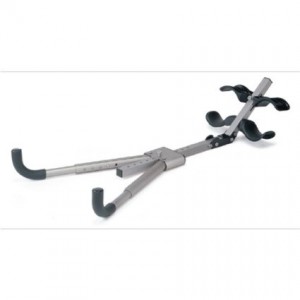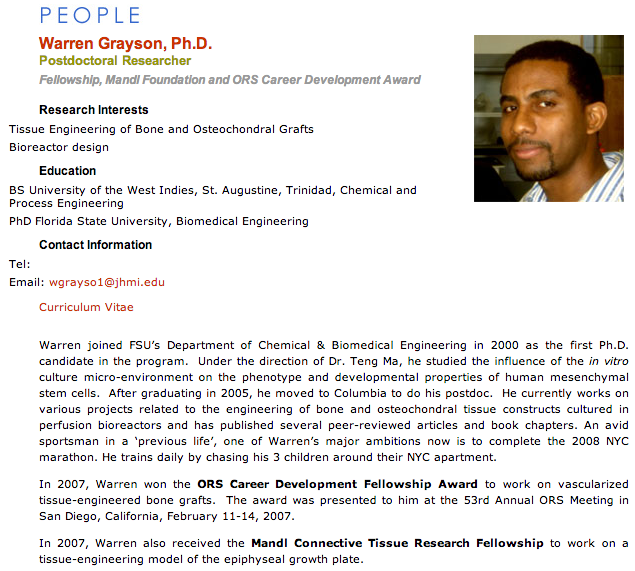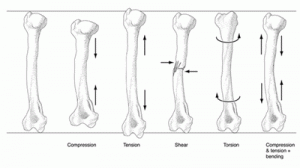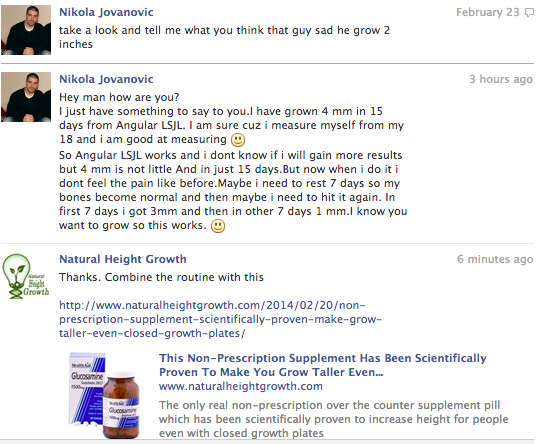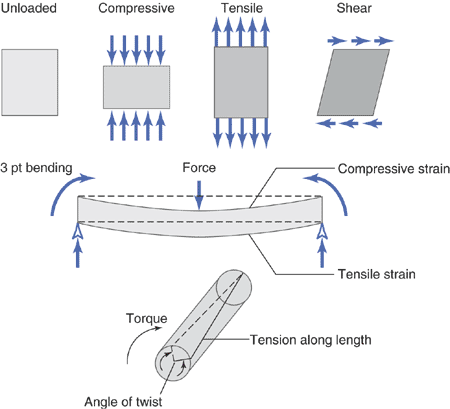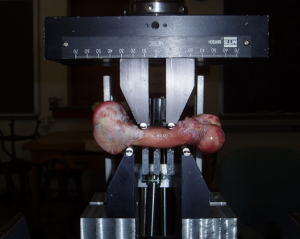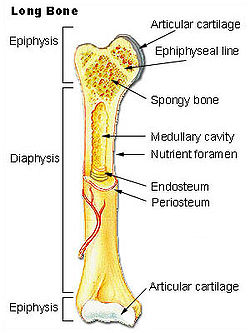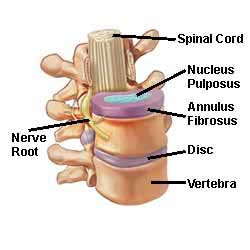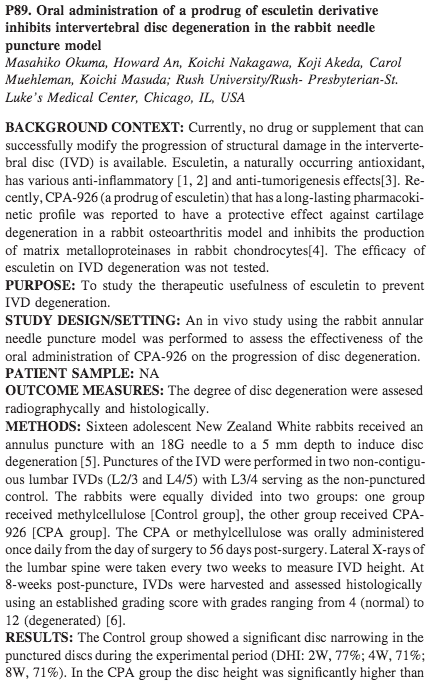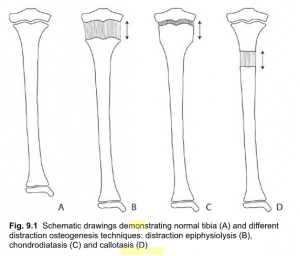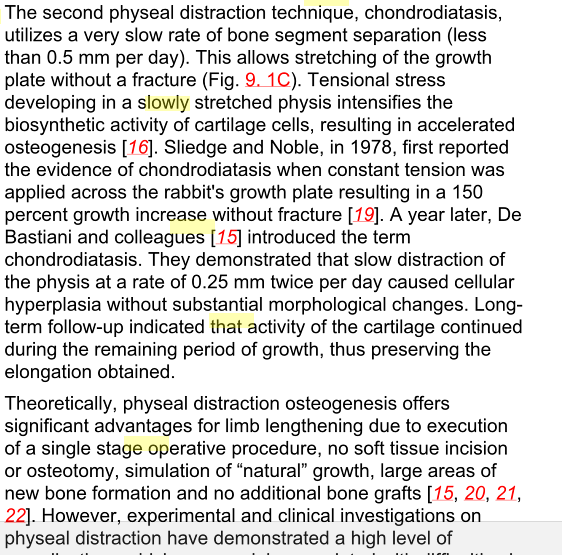So You Are A Basketball Player and You Wish To Become Taller…
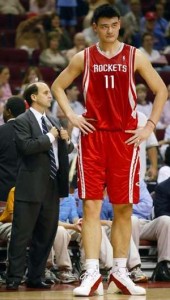 I’ve said in the past before that for a long time, I was a huge basketball fan. Growing up in the 90s and watching what is probably one of the most transcendent figures in professional sports establish his immortality gave me personal ideas on becoming a professional athlete. After years of practice and drills in the basketball courts of North Carolina, I realized that I couldn’t jump or be fast enough laterally. Now I live in Seattle. Being from Seattle and the Pacific Northwest, it was sort of sad that the Supersonics decided to leave to be in Oklahoma City.
I’ve said in the past before that for a long time, I was a huge basketball fan. Growing up in the 90s and watching what is probably one of the most transcendent figures in professional sports establish his immortality gave me personal ideas on becoming a professional athlete. After years of practice and drills in the basketball courts of North Carolina, I realized that I couldn’t jump or be fast enough laterally. Now I live in Seattle. Being from Seattle and the Pacific Northwest, it was sort of sad that the Supersonics decided to leave to be in Oklahoma City.
Just yesterday my friend told me that the Seattle Seahawks had won the Superbowl from the Denver Broncos this year and how the streets of downtown Seattle was littered with hundreds of thousands of people. I had no idea since I don’t keep up with any other sports except basketball. That shows just how out of the loop I am with almost every other sport. Maybe that is why I’ve always had a unique fascination over height, or maybe just length in general. When a person is a basketball fanatic, they care about how big people are.
In basketball, one’s identity can be primarily defined by one’s size. In no other sport is innate god-given genetic luck more important than in basketball. With almost any other sport, one can be quite successful if they put all their effort into it. Even football can be something one can succeed in, since speed and bulk mass is important. For the wide receivers, being smaller can be a good thing since their center of gravity is lower, and speed and the ability to dodge players is critical. We can work on speed and muscle bulk. There is no way to work on making our bones longer or larger.
I don’t know many sports where a person can be drafted and given a multi-million dollar contract based on just “potential” alone. I’ve seen too many guys drafted and defined as “raw” or as “a project” because they are 7 feet tall and decided to start playing basketball only maybe a couple of years ago. To be drafted into professional basketball requires mainly three qualities…
- Length – It turns out that height is not everything. The draft scouts now realize that you have to consider the wingspan of the players, and their maximum standing reach as well.
- Jumping ability – combined with a person’s maximum vertical reach with their feet still on the ground, this shows what is the real maximum vertical jumping reach of a player.
- Coordination – most people over a certain size have a really low coordination ability. I’ve known plenty of people who couldn’t even dribble a basketball properly or get their brain to process a normal jump shot.
Beyond these three qualities, there are obviously a few more qualities which are not as fundamental as those but if you have plenty of natural resources in the fundamentals, the basketball scouts will take a chance with you and just call you a “project”.
This is why in basketball, the main requirement to be considered is size of the player. If you are big enough, there will always be people who want to mold you into a basketball player.
So wishing to become taller is probably one of the most common desires in developing basketball players. Gaining even 2 extra inches can change one’s athletic career forever.
The first thing to realize is that probably 98% of all basketball players have at some point expressed the desire to be even bigger than where they are now. Even if they are already in the long tail/upper reaches of the height distribution curve, it is still not enough for them. Gaining more height and length only helps their game.
Is there something a person can do as a basketball player to get more size?
It depends mostly on how old a person is. If the player is 17 or younger, they still have a chance to grow more, on average. If the player is 18 or older, then there is probably very little chance they would ever again experience a natural growth spurt. While 1-2 inches in possible, a 19 year old basketball player should not expect that their height is going to explode upwards in one year.
In the few well known cases like David Robinson, Anthony Davis, or Dennis Rodman, their unique growth progression is something that happens to very few people. They are the 1 in a million case which no one who has even an average intelligence should expect for themselves. I have always said that one should not count on dumb luck and chance for god or randomness to do something nice for them. That is why I am willing to start a website like this one.
The best thing to do for any High School or Middle School player (male or female) who has dreams to become a professional basketball player, it is absolutely critical that they asses their own unique situation, and be practical in their choices. So let’s take a look at the most popular basketball player in the game today…
What Can Lebron James Tell Us About How To Grow Taller?
It turns out that there is not a lot that the basketball prodigy can tell us since he had no control over it when he was going through adolescence and puberty. Like most young guys in middle school and high school playing organized basketball, one of the key desires is to become bigger (taller and longer) so that they can be better at playing the game. Height is an attribute that is extremely valued in the particular sport where the general rule is “the more the better”. I remember Lebron once saying that his idol when he was growing up was Michael Jordan. He wanted to be tall like Mike and also wanted to get MJ”s shoes. Coming from a low class family, and being raised by a single mother, it was not possible at the time for him to afford the Air Jordan sneakers. However, the other desire was achieved. He did eventually reach 6′ 6″ like his idol but it seemed that nature (or maybe god?) gave him even more, and he outgrew his idol. The realization one day that he was even bigger than his basketball idol was probably something he did not expect.
Was he happy about that? He might have surpassed MJ in stature but will he surpass MJ in accomplishments and rings in his playing career?
We could guess that his height was due to genetics, but there doesn’t seem to be that much information about James’ father, only mother. From the interviews and talks with the mother, I suspect that she is of average height (5′ 4″-5′ 6″). The father who I have found very little information about we might guess could have been a good athlete at a young age too, and might have been just above average in height (6′ 1″-6′ 3″). Using those types of values, even at the upper limit, James’ height calculated using the standard formulae would have been around 6′ 2″, maybe. Based on the SD of height, he is at least 2 SD away from what is predicted of his height by the calculate values of his parents
So his height is listed at 6′ 8″ with a wingspan of 7′ 2″. Many people point out that his predraft measurements say that he is actually 6′ 7.25″ without shoes but after examining his pictures compared to other professional basketball players and standard height doors, we have enough confidence to say that Lebron James’ height is more likely 6′ 7.75″ for most of the day standing upwards. Based on the normal way height changes from diurnal variations of the intervertebral discs, his height after being decompressed from lying horizontally for a long time (aka sleep) would most likely exceed 6′ 8″. I personally suspect that him ending up so much bigger than what was expected of him from just the math shows how random and unique case he is.
If we look at the body shape of this “basketball player” we notice that he is much wider/ thicker than the average professional basketball player. He is described by sports analysts of having a NFL Linebacker type of body. Where most of the other players have an ectomorphic body type, his is a mesomorphic type. People with mesomorphic body types are not supposed to become too tall, because of the amount of weight that the growth plates would be subjected to. If there is too much weight on the cartilage, they will go through faster senescence. His listing of weight at 260 lbs says that he weighs more than many NBA centers, who are much taller than him. He supposedly can put on 20 lbs of pure muscle from doing almost nothing and eating just lean chicken.
We look at his strength next. This guy is strong. Unlike Kevin Durant, who has rather thin shoulders, skinny, but long, Lebron has slightly larger than proportion shoulders and a wider mid-section/core. Where Kevin Durant couldn’t even do 1 bench press of 185 lb in the predraft, Lebron is one of the only NBA players who have ever broken a backboard.
In terms of strength and weight, his body and natural abilities is much higher than the prototypical NBA player. How can we explain this phenomena? We suspect that what has happened to Lebron is the same as what happened to MJ, Michael Jordan. These basketball superstars who are supposed to be genetic freaks were never supposed to be as tall and long as they were supposed to be. Sure, we can say that all professional basketball players are supposed to be much shorter than they are supposed to be, since they are so many standard deviations away from what their genetics predicted, but the unique body shape of Lebron is a very extreme example. He has the strength and thickness of someone who is much shorter but just became taller from random chance.
The same can be said about MJ. MJ’s family genetic history shows no one that tall. His sister is just 5′ 5″ and his father is 6′ 0″. His brother Larry is around 5′ 9″. Michael’s height should have been just 5′ 11″-6′ 1″. His height as his late James Jordan said was maybe a sign from god that Michael would have to be an athlete or he would have starved due to lack of focus and good work ethic when he was younger. When we look at MJ’s sons, they are both closer to the average, at around 6’1″ – 6′ 2″. Michael was an anomaly in his size since no one in his family was that big. He has the strength and width of someone who is much shorter (he is also one of the only other people to ever break a backboard) but somehow through chance became much taller than what his genes had predetermined.
Looking at the numbers
There are supposed to be 370,000,000 people in the USA today. Guessing, out of those, maybe 2-3 mil of those people have played basketball in an organized fashion. Out of those people, about 1.5-2 mil are young enough between the ages of 12-18 to still have intact growth plates. Most of these kids, white, black, asian, hispanic, probably harbor some dream of becoming taller and playing basketball professionally for a career.
So you have the intent, and the desire, as well as some drive to get better at the game, which means these young middle school and high school kids practice drill in the basketball courts 5 times a week in their school basketball teams. The mental aspect is all there. That probably makes up half or more of those kids, or about 1 million secondary school basketball players.
Then the only thing that is really required is the physical. The main requirement would be size. Is the kid big enough to be selected by a team at the next level? For the majority of them, they are not.
Most of those kids trying to get into the NBA (or even college basketball) will never be taller than 6′ 3″, which I believe is the current established cutoff point, where a kid goes from “average” size to “worth the scout to consider” size. For example, Anthony Davis was a completely passed over average skilled 6′ 3″ point guard until he grew 7 inches which pushed him into the national spot light. A 6′ 10″ PF/4 with point guard handling skills is something which is very hard to come by. On average, most kids have already grown to 98% of their expected final adult height by 15-17. A 7 inch growth spurt within a 1 year time is something to definitely take notice to which changes almost everything in the basketball world. When you are too short/small, the scouts at the next level will not look at you, unless one has tremendous skills.
The problem there, is that those others “skills” are also sort of an innate talent which a person can’t really work on. The ability to jump high, go for an explosive first step to drive pass the defender, the “handles” and lateral quickness are something which is mostly innate talent which can not be learned. Sure, one “can’t teach height”, but the basketball monday morning QBs also forget to mention that you can’t teach athleticism either. Some people just have more fast trigger muscles which allow them to jump higher, no matter how much jumping practice the other person competing against them does. One might be able to get the drills in the gym every day to get faster, but the limitation will come down to the thickness of the nerve bundles running down their limbs and the number of neurons in the brain, which gives the hard working kid the ability to be coordinated, explosive, and/or be able to read the signals during the game correctly and instantly. Those anatomical traits are set at birth.
When our team and research goes away, the kids are left to the forces of chance and pure dumb luck. Of course, every one of those kids who messages us claims that they will make it, and will work hard everyday. We are sure they will, but there will also be a million other kids just like them going through the exact same drills, the same exercises, the same routines and strategies. What is going to make them unique and differentiate themselves from the million other kids in the exact same position?
There is no way to really get around it either. There is no cheat code one can use. This is not like a college admission test where being a legacy, having parents throwing money, or knowing someone is going to give them a shortcut way to be admitted into that exclusive club thousands of others are trying to get in. You can’t scam your way into becoming a professional athlete, since that is based on scouts looking at the raw skills of a person. Maybe 20-30 years ago a real talent might have been missed and they never got their shot in the NBA trials, but these days with the internet, it is almost impossible for the basketball scouts to miss out on what many people call a “touch diamond”. Big guys who have some type of coordination are often sent to basketball camps to be worked on as a “project” because they are too “raw”.
We often get bombarded by teenagers telling us that they are basketball players wanting to become taller. What can they do?
There are many things they can do, but we haven’t written any type of guide yet for them.
However, what we can suggest can only give them at most 2 inches and those are for the most extreme cases. We try to be very realistic on what we can control and have any type of affect on. If these kids are hoping for something to give them 4-5 inches, I can only tell them to pray that they are that lucky and be that 1 out of 100,000 kid who gets the mega-growth spurt. I would of course tell them to not put all their hopes into something so random and improbable and focus instead of looking for something that has better odds for success. Hedge their dreams of playing professional ball and stay in school to learn a useful skill to take with them.
The life of a professional athlete is short since the human body will eventually wear down. You have to have some type of backup plan after one’s playing days are over.
In the world, we only hear about the success stories and the winners, the people who got lucky. (Sure, they were focused, worked hard, focused on learning, and were persistent but there are plenty of examples I know of people who still did not reach the success they hoped for due to bad luck in some area of life, which they had no control over or could have predicted earlier in life.) We never hear about the losers, the ones who never made it, who were not big enough or talented enough. This tendency of people to constantly use as case study the few minority cases where the person had a happy ending is known as survivorship bias. We like to trick ourselves in believing that our life and case is somehow special. Not everyone can become a MJ or Lebron. .
In the long term, our physical accomplishments are most likely going to become surpassed by someone else. Like all the Olympic records, the newer generation of kids will shatter the older generation of athletic records. People thought MJ was the greatest 20 years ago but now it is supposed to be Lebron, which might be surpassed by KD in another 10 years. Who is next, who will be so physically imposing and dominant who will make Lebron, Shaq, and Dwight H. look weak and small in comparison?
The people in our generation seems to be so fixated on the size, and strength of Lebron, DH, and KD, because we don’t have footage showing how well Bird, Magic, and MJ played which was 20 years ago. The older generations knows full well the accomplishments of Wilt Chamberlain but we don’t know that. They talk about his strength and dominance but we think of Shaq when we think of overwhelming size and dominance. We just didn’t experience what they experienced. That is their reference point. We all are using our own reference point, our current time line and say that the person in our current time is the best of all time, when they are only the best of our particular time or generation.
However, our mental and intellectual accomplishments will stand for much longer. As long as something we created or discovered is shared with the world and the world fully accepts and acknowledges our contribution and effort, people will always remember our life’s work.
In the words of the late Los Alamos physicist Richard Feynman…
“From a long view of the history of mankind, seen from, say, ten thousand years from now, there can be little doubt that the most significant event of the 19th century will be judged as Maxwell’s discovery of the laws of electrodynamics. The American Civil War will pale into provincial insignificance in comparison with this important scientific event of the same decade.”

